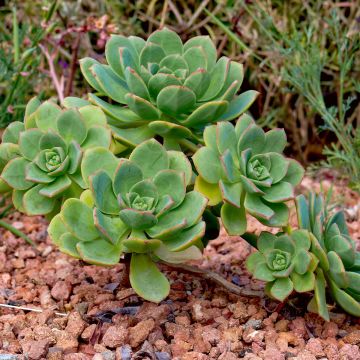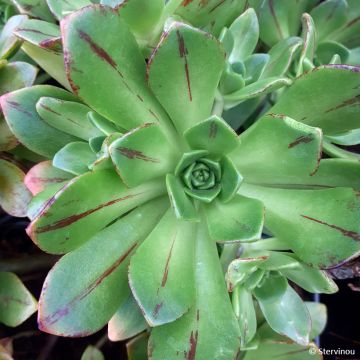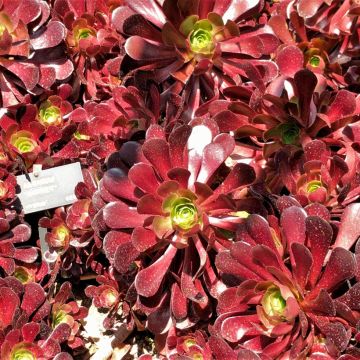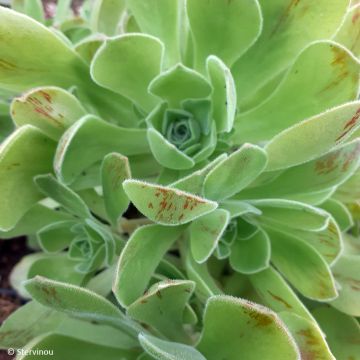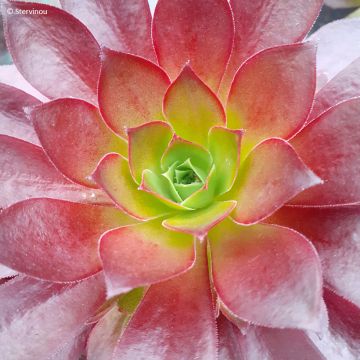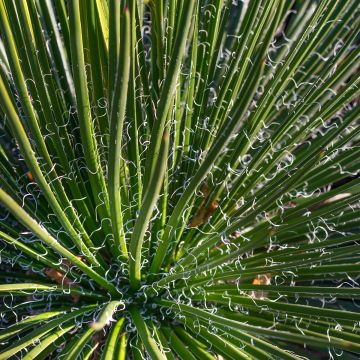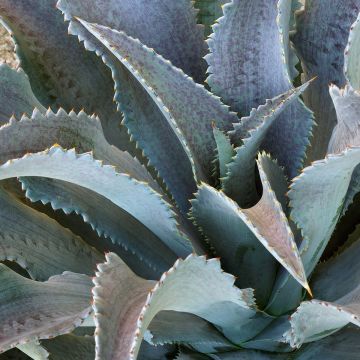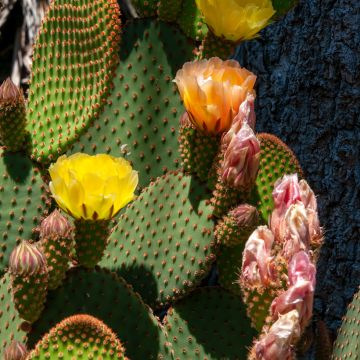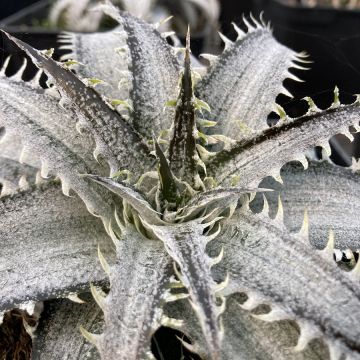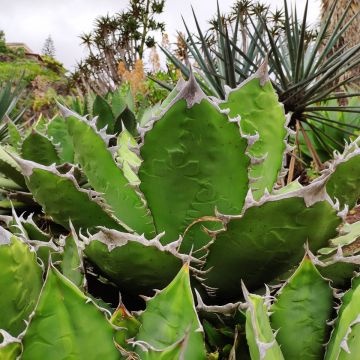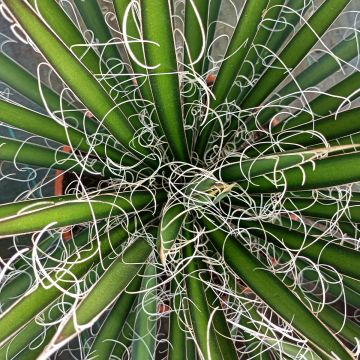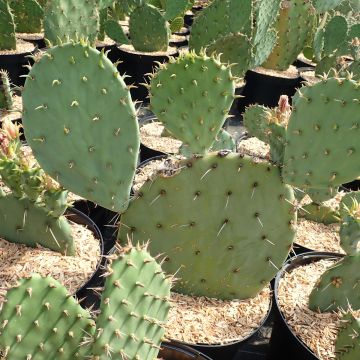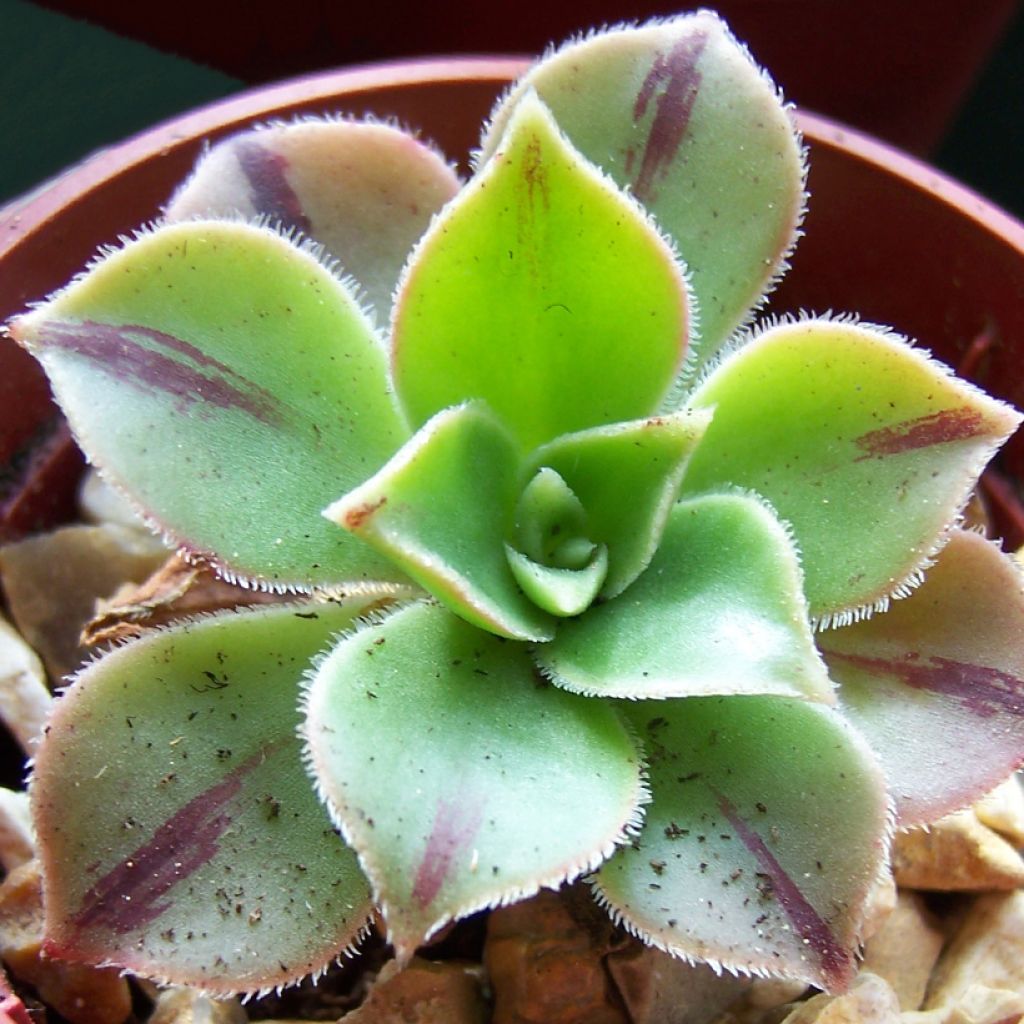

Aeonium leucoblepharum
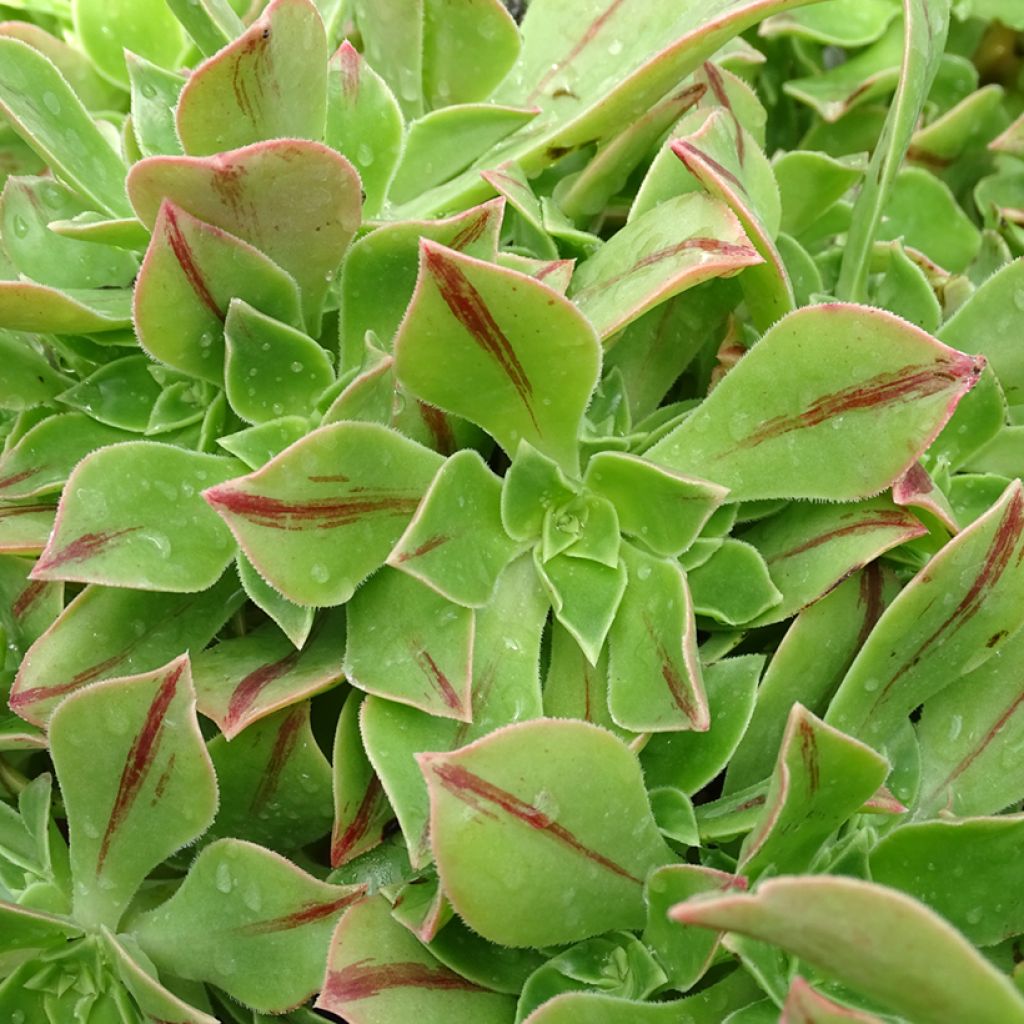

Aeonium leucoblepharum
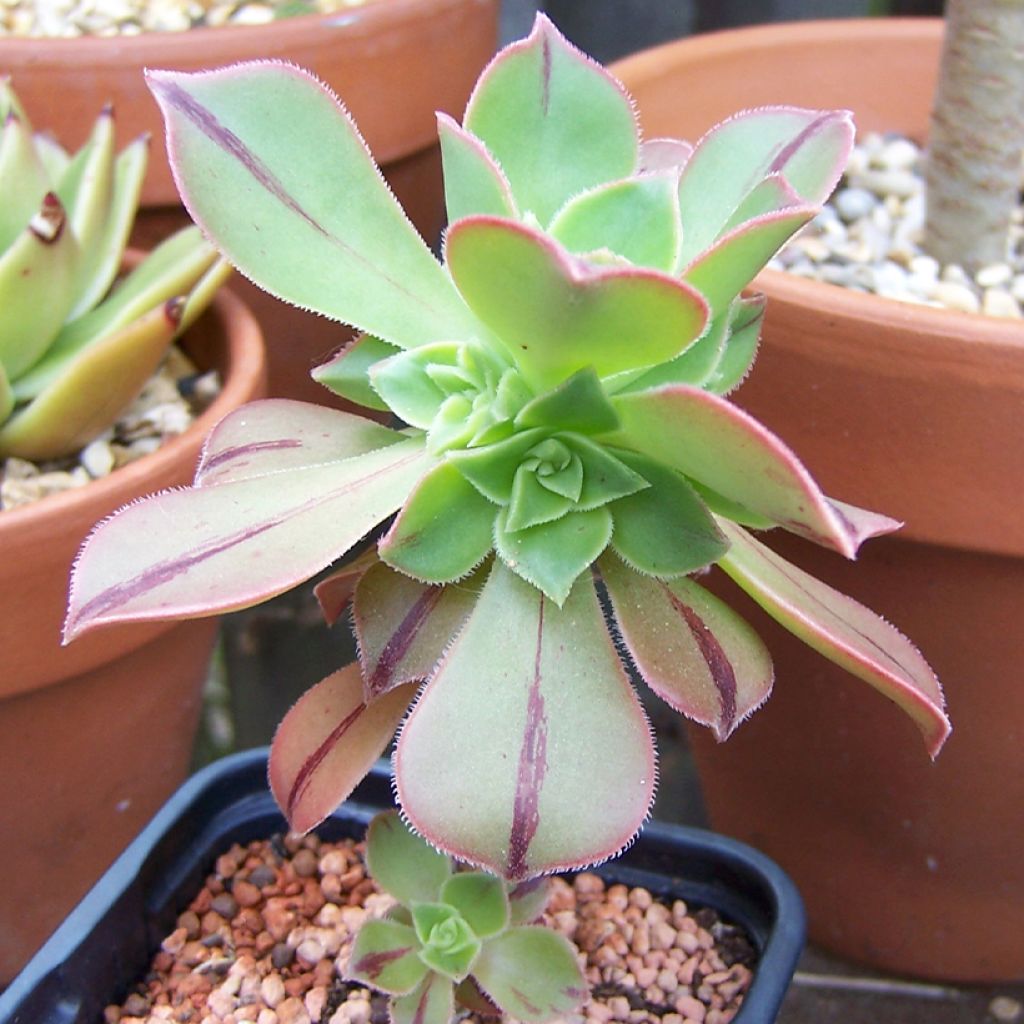

Aeonium leucoblepharum
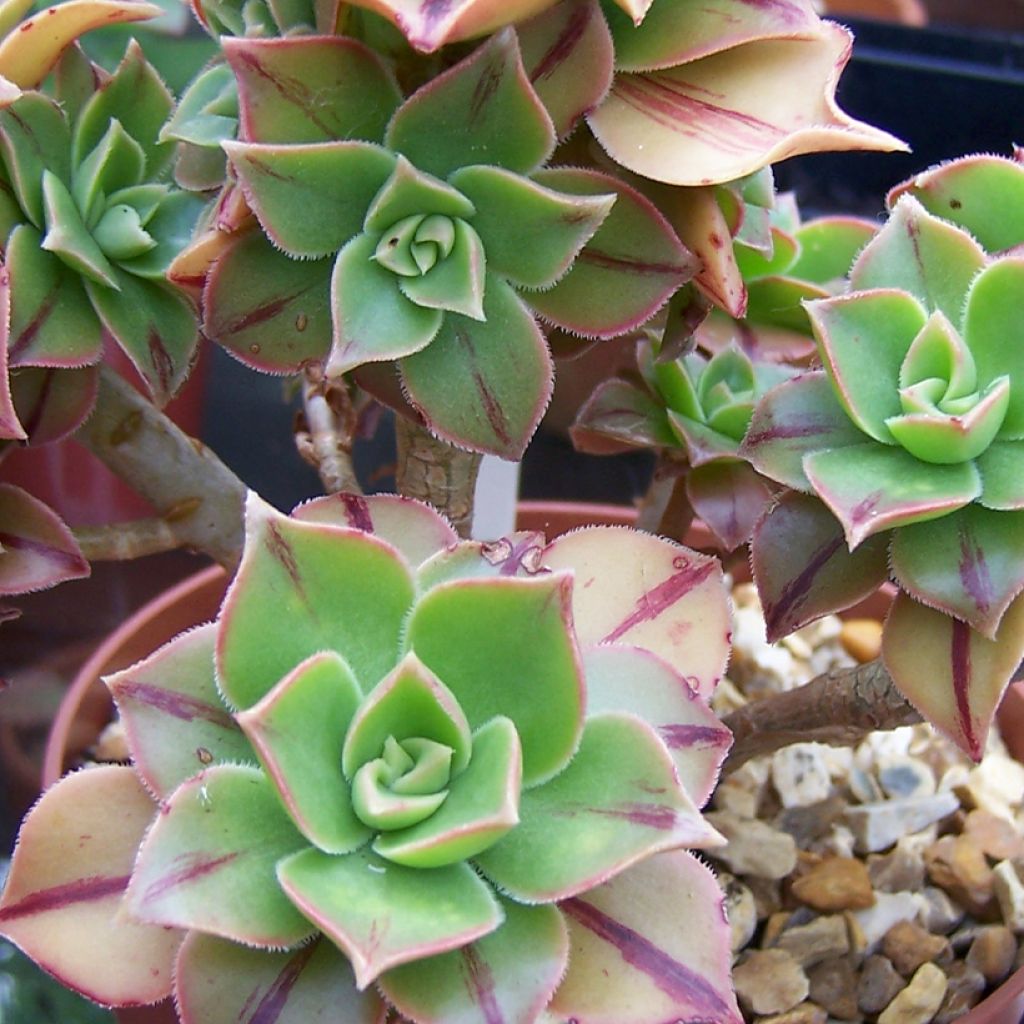

Aeonium leucoblepharum
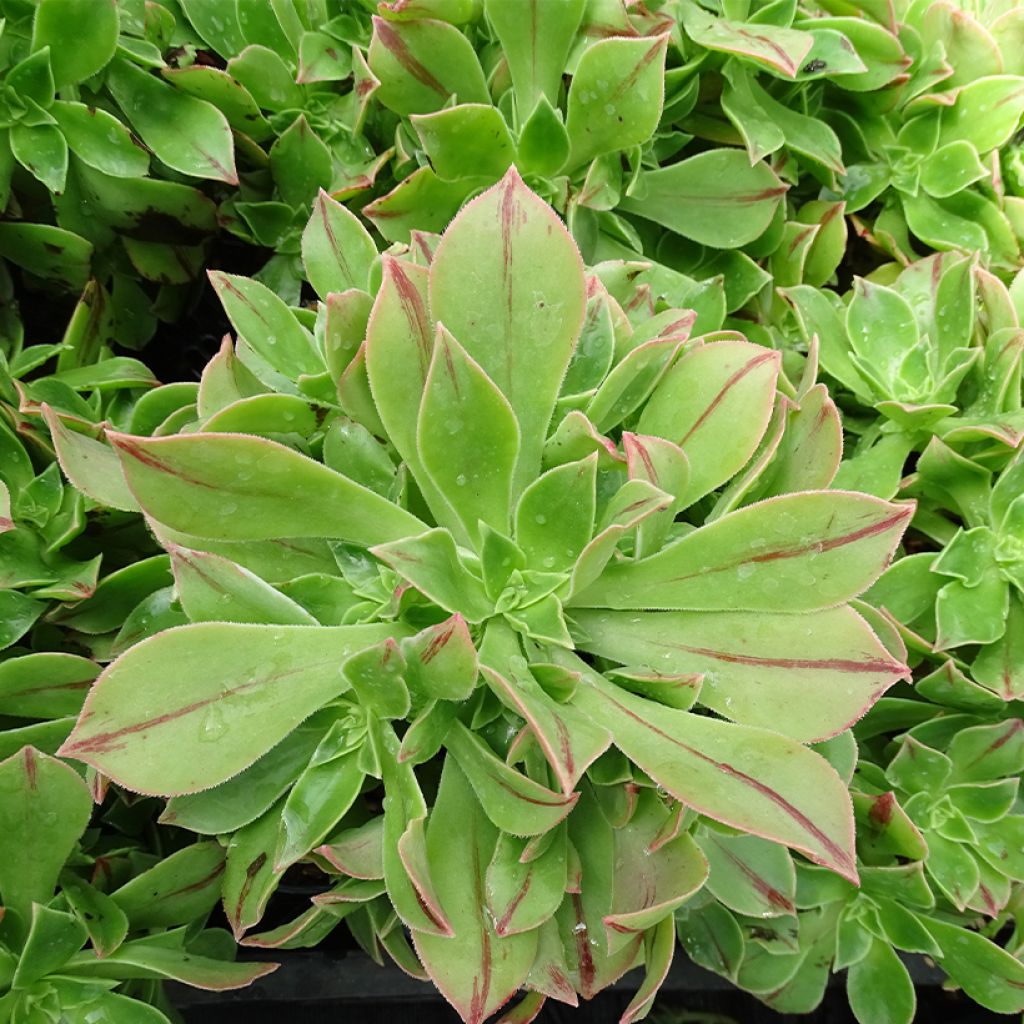

Aeonium leucoblepharum
Aeonium leucoblepharum
Aeonium leucoblepharum
East African Tree Houseleek
The aeonium arrived all squashed, I don't think it will recover.
Josyane , 31/05/2024
This item cannot be shipped to the selected country
Delivery charge from €5.90
More information
Delivery charge from €5.90
More information
Schedule delivery date,
and select date in basket
This plant carries a 24 months recovery warranty
More information
We guarantee the quality of our plants for a full growing cycle, and will replace at our expense any plant that fails to recover under normal climatic and planting conditions.
From €5.90 for pickup delivery and €6.90 for home delivery
Express home delivery from €8.90.
Does this plant fit my garden?
Set up your Plantfit profile →
Description
Aeonium leucoblepharum stands out in the large tribe of Aeoniums. It is one of only two species from East Africa, where there are different forms depending on the country of origin. It thus forms a small compact bush, generally 70-80cm (27.6-31.5 in) tall, or even a bit taller, particularly decorative with its rosettes of geometrically-shaped leaves. These leaves are green with a reddish streak in the middle, and can turn pink or have an orange margin depending on the strains. Native to high-altitude forests, it is one of the few Aeoniums that thrives in semi-shade and even fears direct summer sunlight in Mediterranean climates! Not very hardy, it can easily be grown in a pot anywhere in France.
Aeoniums are succulent plants in the Crassulaceae family, which comprises about 1500 species, many of which have ornamental value. Everyone knows the popular Kalanchoes with their vibrant flower bouquets that brighten up our interiors, or Echeverias that have had their heyday in mosaic art, while Sedums are essential for green roofs... We could also mention the friendly Joubarbes, or Sempervivum, which are part of our spontaneous flora despite their exotic appearance, and many others.
Aeoniums have a family resemblance that makes them easy to identify, at least as a genus, but when it comes to species or variety, it becomes more difficult. And in the case of Aeonium leucoblepharum, it is even less obvious, because there are different strains depending on the geographic origin of the mother plant. Unlike most native species of the Canary Islands, this one is one of only two that live in East Africa. It is found in countries such as Ethiopia, Yemen, Somalia, or Kenya, where it grows in mountainous and forested regions at medium altitudes (1500 to 3500 metres (4921 feet 4 inches to 11482 feet 11 inches)). This diversity of origin is reflected in variable morphologies, both in terms of habit, which can range from 50cm (19.7in) to two metres tall, more or less erect or rather trailing, or slightly creeping, and in terms of leaf colours.
Depending on the strain of origin, the leaves of this branched succulent, organized in rosettes (with a very decorative appearance), have more or less acuminate tips and variable colours. They can be predominantly green or yellow-green, then turn pink afterwards, or be ornamented with orange, almost always with a reddish streak in the middle. The leaves can be relatively large, up to 12cm (4.7in) long and 3.5cm (1.4in) wide, and are extremely decorative due to the juxtaposition of colours. This Aeonium also produces small decorative flowers, about 1.5cm (0.6in) in diameter, grouped in yellow, or even reddish, inflorescences.
Another uniqueness of Aeonium leucoblepharum lies in its original habitat, which allows it to tolerate a certain atmospheric humidity and even appreciate receiving some regular watering in summer. In the Mediterranean, where the sun is scorching, it is best to avoid direct exposure, and it is better to place it in semi-shade. Compact enough in cultivation, it will easily accept being grown in a pot so that it can be brought indoors in a frost-free room in winter.
Aeoniums are a choice for succulent enthusiasts, and this colourful species will delight them with its geometric foliage with a very graphic design. Planted in a pot, it will fit perfectly in a contemporary environment, and in climates mild enough to accommodate it in the ground, such as the French Riviera, it will be a point of interest in a dry garden. Combine it with other "desert" plants that also stand out for their particular geometry, such as Opuntia microdasys with its small grey-green prickly pear pads punctuated by whitish cushions of spines. The sculptural Agave victoriae-reginae with its perfect geometry will also be an excellent companion, as well as Cylindropuntia imbricata, which unlike the others is very resistant to cold and especially remarkable for its unique graphic habit, thanks to its branched "branches" made of cylindrical segments that visually differ from the classic pads of Opuntias.
Aeonium leucoblepharum in pictures
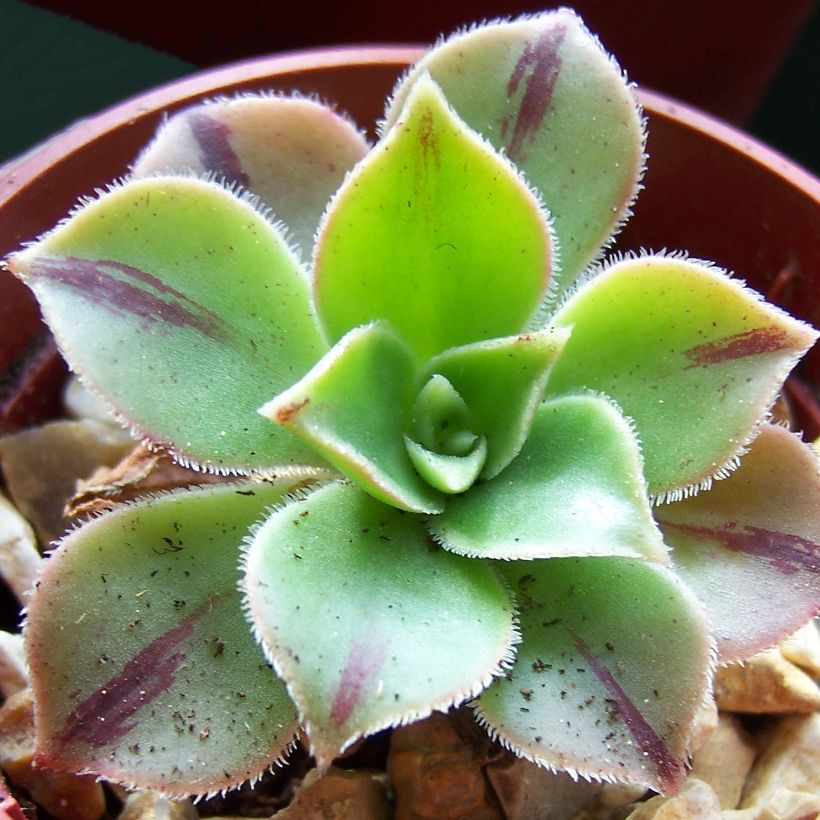

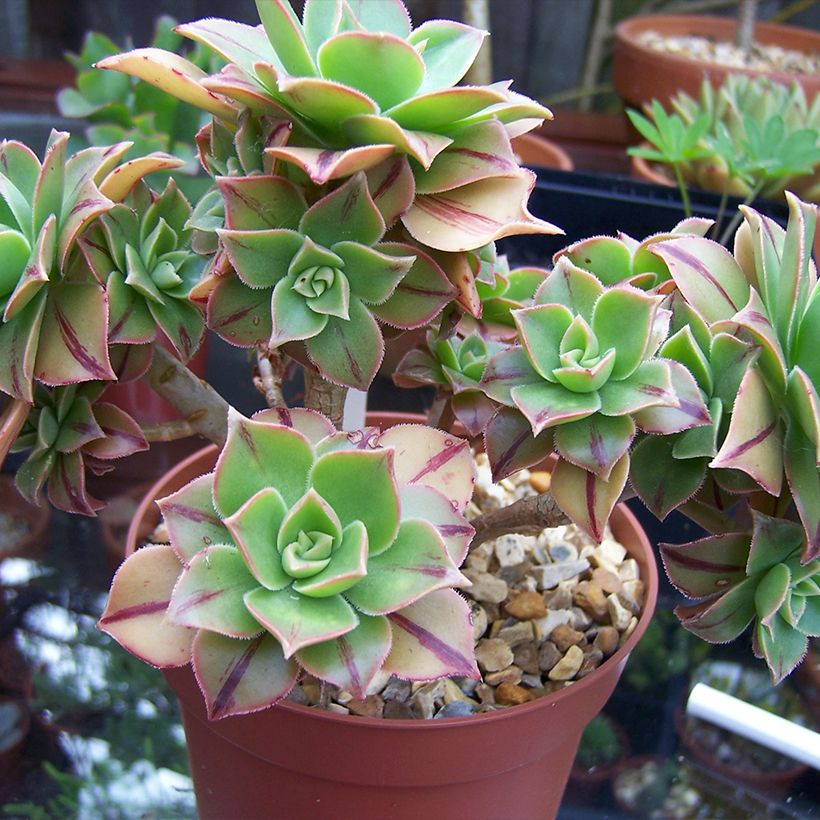

Plant habit
Flowering
Foliage
Botanical data
Aeonium
leucoblepharum
Crassulaceae
East African Tree Houseleek
East Africa
Other Aeonium
Planting and care
Aeonium leucoblepharum is quite heat and drought resistant, but due to its origin (mountain forests), it also tolerates some atmospheric humidity, especially in winter, and appreciates occasional watering in summer. For the same reason, it can also grow in partial shade and in hot regions, it is best to avoid direct summer sunlight. It prefers a light, well-drained soil, even sandy. Plant it after the last frost in open ground in coastal or hot and dry climates. Planting in pots is possible throughout the year, obviously protected from frost. It thrives in full sun or partial shade in hot climates, and likes to have warm roots. Under these conditions, it is hardy up to -4°C (24.8 °F), and will live for a long time. Overwinter this plant in an unheated but frost-free location, and preferably very bright. Water moderately from autumn to spring. Remove faded inflorescences and dead branches.
Planting period
Intended location
Care
Cacti and succulents
Haven't found what you were looking for?
Hardiness is the lowest winter temperature a plant can endure without suffering serious damage or even dying. However, hardiness is affected by location (a sheltered area, such as a patio), protection (winter cover) and soil type (hardiness is improved by well-drained soil).

Photo Sharing Terms & Conditions
In order to encourage gardeners to interact and share their experiences, Promesse de fleurs offers various media enabling content to be uploaded onto its Site - in particular via the ‘Photo sharing’ module.
The User agrees to refrain from:
- Posting any content that is illegal, prejudicial, insulting, racist, inciteful to hatred, revisionist, contrary to public decency, that infringes on privacy or on the privacy rights of third parties, in particular the publicity rights of persons and goods, intellectual property rights, or the right to privacy.
- Submitting content on behalf of a third party;
- Impersonate the identity of a third party and/or publish any personal information about a third party;
In general, the User undertakes to refrain from any unethical behaviour.
All Content (in particular text, comments, files, images, photos, videos, creative works, etc.), which may be subject to property or intellectual property rights, image or other private rights, shall remain the property of the User, subject to the limited rights granted by the terms of the licence granted by Promesse de fleurs as stated below. Users are at liberty to publish or not to publish such Content on the Site, notably via the ‘Photo Sharing’ facility, and accept that this Content shall be made public and freely accessible, notably on the Internet.
Users further acknowledge, undertake to have ,and guarantee that they hold all necessary rights and permissions to publish such material on the Site, in particular with regard to the legislation in force pertaining to any privacy, property, intellectual property, image, or contractual rights, or rights of any other nature. By publishing such Content on the Site, Users acknowledge accepting full liability as publishers of the Content within the meaning of the law, and grant Promesse de fleurs, free of charge, an inclusive, worldwide licence for the said Content for the entire duration of its publication, including all reproduction, representation, up/downloading, displaying, performing, transmission, and storage rights.
Users also grant permission for their name to be linked to the Content and accept that this link may not always be made available.
By engaging in posting material, Users consent to their Content becoming automatically accessible on the Internet, in particular on other sites and/or blogs and/or web pages of the Promesse de fleurs site, including in particular social pages and the Promesse de fleurs catalogue.
Users may secure the removal of entrusted content free of charge by issuing a simple request via our contact form.


































